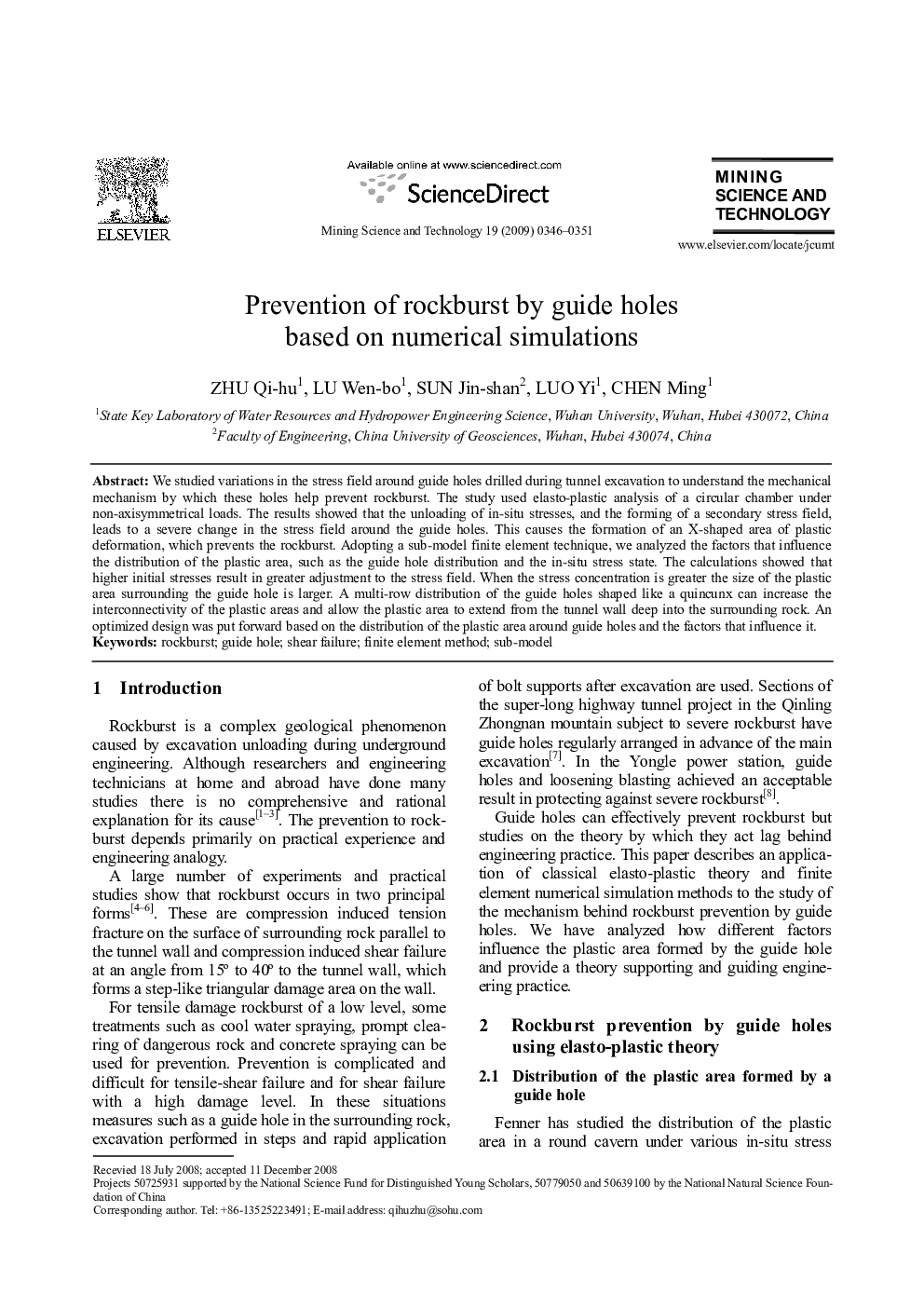| Article ID | Journal | Published Year | Pages | File Type |
|---|---|---|---|---|
| 294802 | Mining Science and Technology (China) | 2009 | 6 Pages |
We studied variations in the stress field around guide holes drilled during tunnel excavation to understand the mechanical mechanism by which these holes help prevent rockburst. The study used elasto-plastic analysis of a circular chamber under non-axisymmetrical loads. The results showed that the unloading of in-situ stresses, and the forming of a secondary stress field, leads to a severe change in the stress field around the guide holes. This causes the formation of an X-shaped area of plastic deformation, which prevents the rockburst. Adopting a sub-model finite element technique, we analyzed the factors that influence the distribution of the plastic area, such as the guide hole distribution and the in-situ stress state. The calculations showed that higher initial stresses result in greater adjustment to the stress field. When the stress concentration is greater the size of the plastic area surrounding the guide hole is larger. A multi-row distribution of the guide holes shaped like a quincunx can increase the interconnectivity of the plastic areas and allow the plastic area to extend from the tunnel wall deep into the surrounding rock. An optimized design was put forward based on the distribution of the plastic area around guide holes and the factors that influence it.
